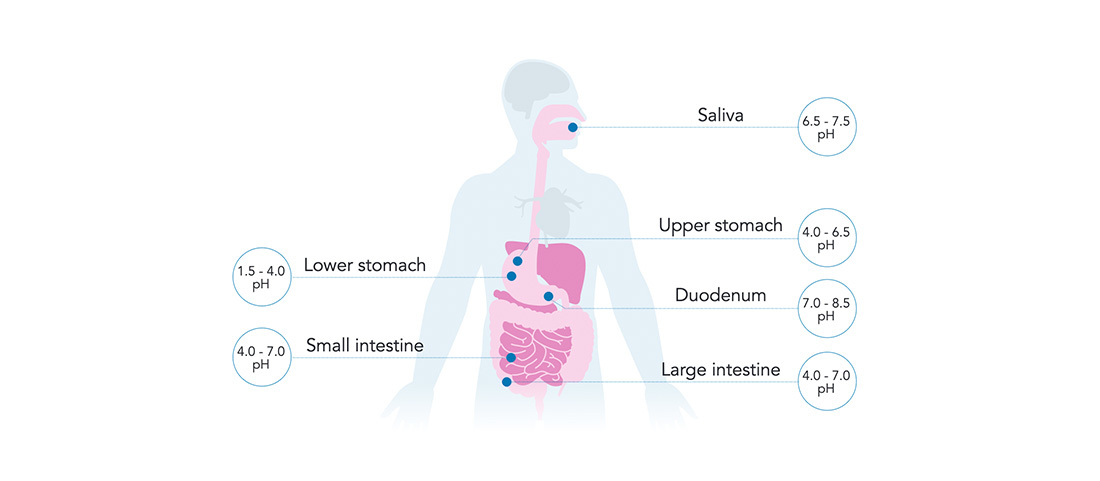
August 23, 2023
Understanding Digestive Enzymes and Supporting Healthy Digestion
Read Time: 3 Minutes
By: Scientific Team at NeuroScience
Do you feel like you can’t eat like you did when you were younger, with some meals resulting in occasional bloating, indigestion, or general discomfort? The science says…you may be right.
The body relies on enzymes throughout the digestive tract to break down foods, starting with salivary enzymes in the mouth to enzymes secreted by microbial bacteria in the small intestine. These digestive enzymes, such as amylase or lipase, are vital for ensuring the body can maximize nutrient absorption from the variety of foods in our diet.
As the body ages, it produces fewer digestive enzymes that are also less effective, with drop-offs in those over 50 years old and steeper declines in those over 65 years old.1 And age is just one factor behind changes in digestion. A highly stressful lifestyle, an active immune system, or reduced microbial diversity in the gut all have been shown to impact the body’s ability to digest foods and absorb nutrients effectively and efficiently.2
Supporting Healthy Digestion
To naturally support digestion, consider adopting healthier eating habits. This includes eating meals slowly, eating smaller meals, and limiting dietary intake of highly processed foods or refined sugars. And for those that often dine out, knowing all the ingredients that go into a prepared meal is always recommended.
Another consideration is exogenous digestive enzymes, which are designed to supplement the body’s own endogenous enzymes to support digestion.* Ideally, these enzymes should target the food antigen at the optimal pH of the targeted digestive site, such as the upper stomach or duodenum.3* There are many enzymes used in pre-meal, digestive dietary supplements and they come in many combinations, often based on the intent of the product (i.e. target high starch foods).* But remember, exogenous enzymes come from animal, vegetarian, or vegan sources, so select enzymes based on one’s dietary goals.
Common Digestive Enzyme Groups
- Proteolytic enzymes digest proteins, which provide amino acids that help the body build muscle and neurotransmitters like serotonin, GABA, and dopamine.* Examples include proteases and peptidase.
- Lipolytic enzymes digest fats and oils (from vegetables or animals), which provide essential free fatty acids that may help the body in absorption of fat-soluble nutrients like vitamins D, A, E, and K.* Examples include amylase, glucoamylase, acid maltase, invertase, lactase, and galactosidase.
- Carbohydrolytic enzymes digest starchy foods and sugars (lactose, sucrose, and refined sugars), which help the body absorb nutrients from high carbohydrate foods like bread, potatoes, and rice or the sugars in legumes and cruciferous vegetables.* Examples include lipases.
Although it happens multiple times a day, digestion is a complex process that is unique to every body. Understanding the basics of how digestive enzymes work and opportunities to promote healthy digestion is a big “bite” toward a happier, healthier life.
References:
- Rémond, D, et al. Oncotarget. 6.16 (2015): 13858-13898.
- Mu Q, et al. Front Immunol. 2017; 8: 598.
- Tortora G, Principles ff Anatomy And Physiology. 14th ed.; 2014.
